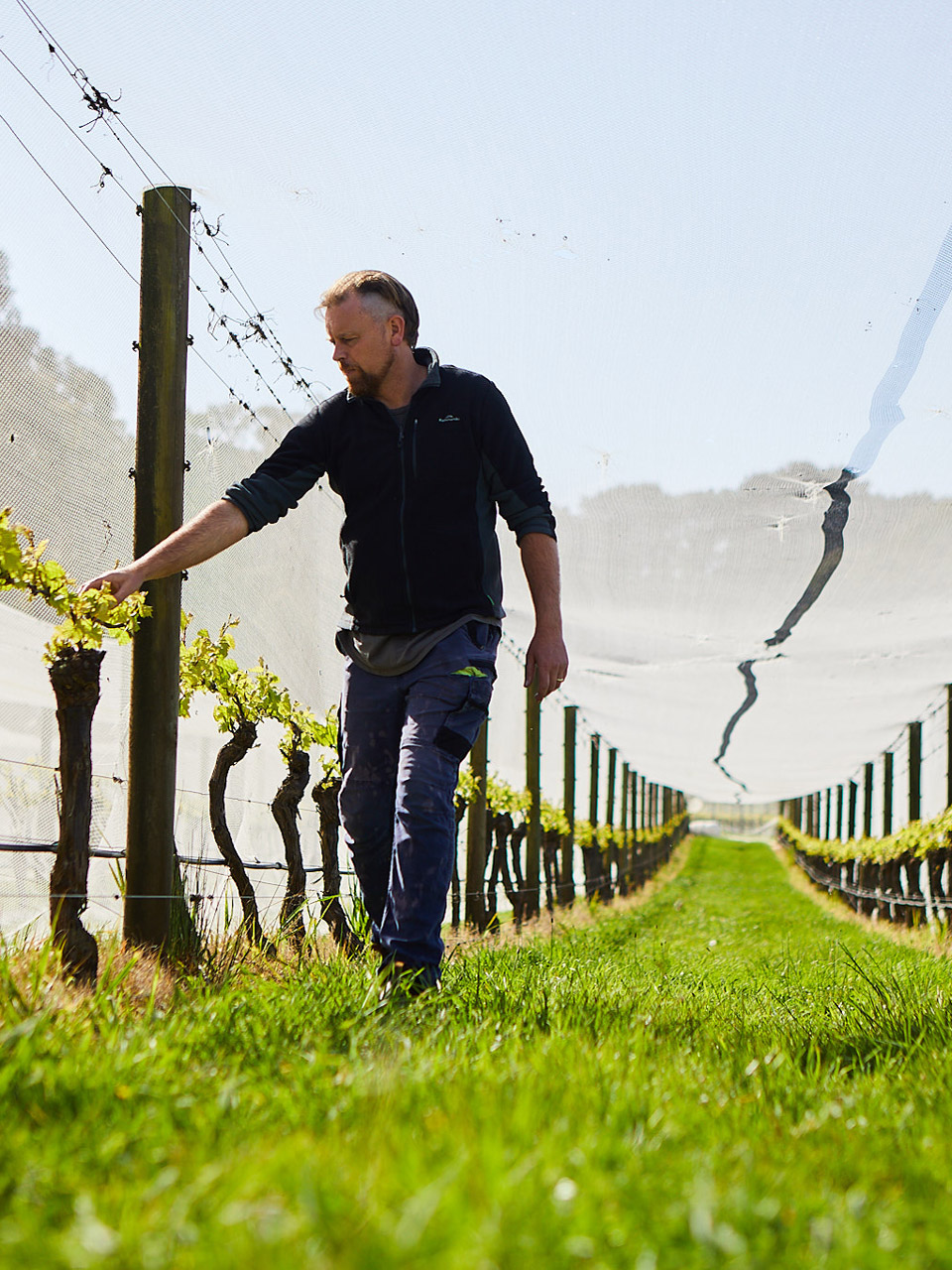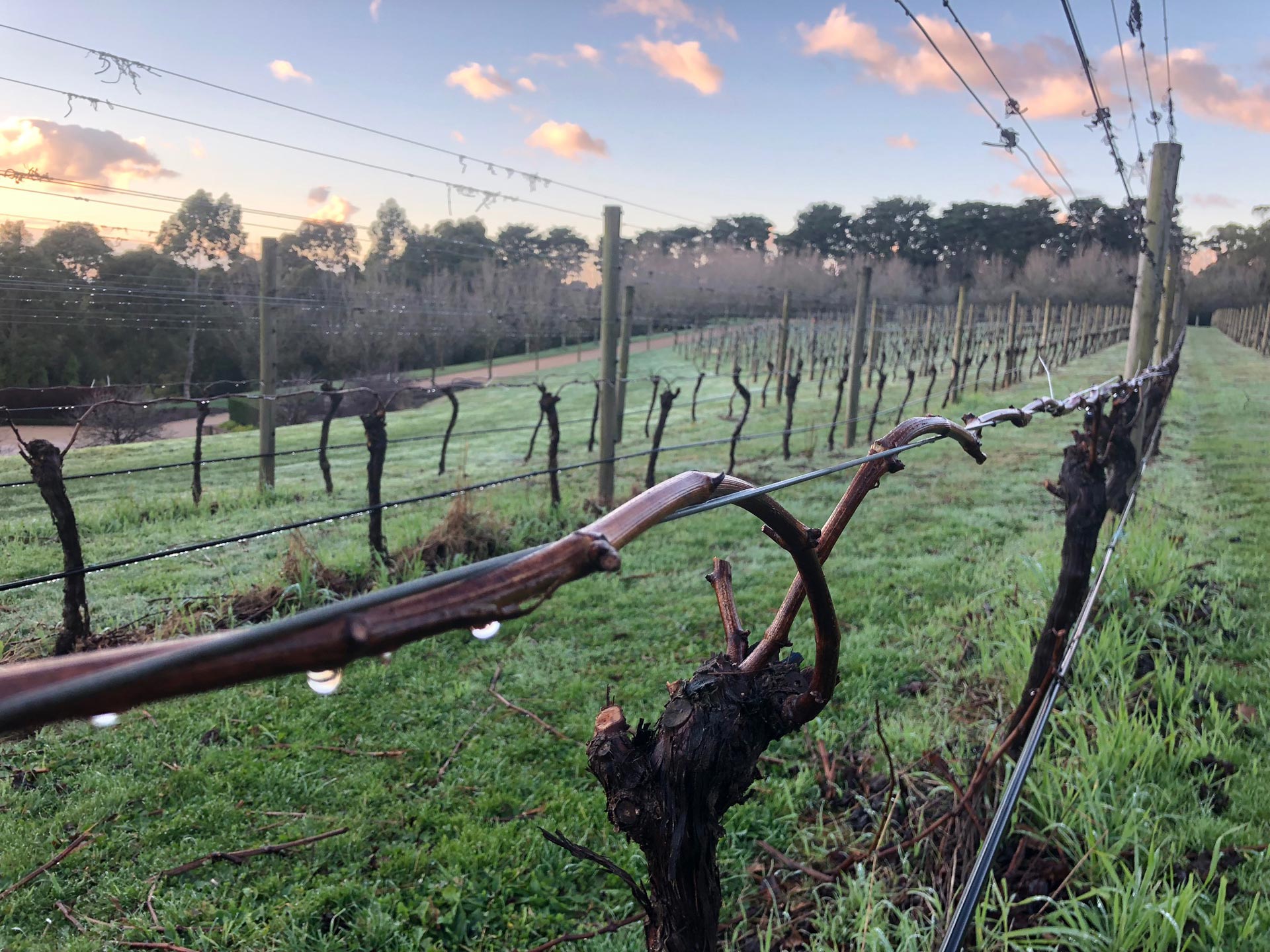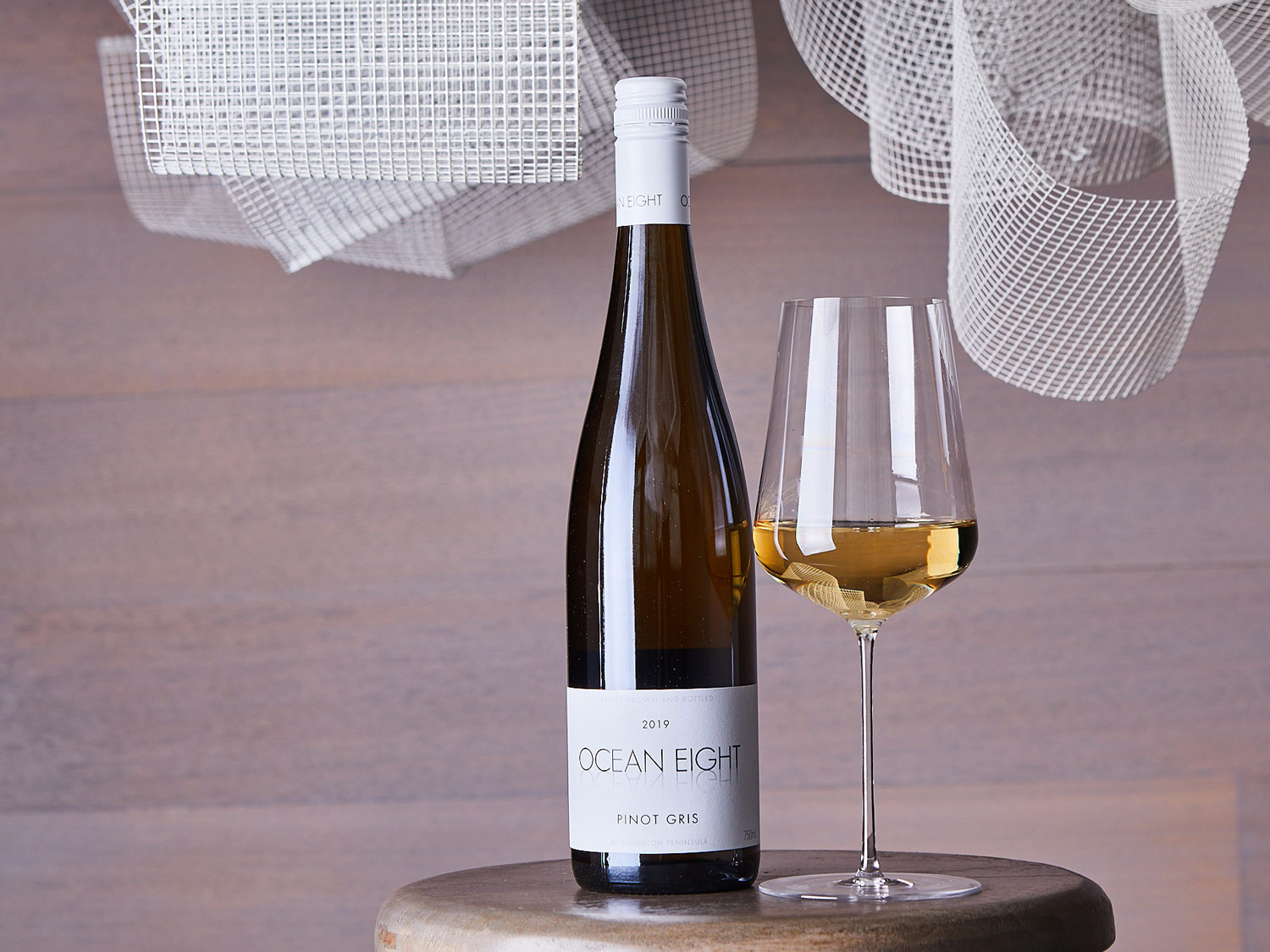Australia’s Best Pinot Meunier
Just a blending variety for Champagne they say… pfft! We took deep dive into varietal pinot meunier – yes, that’s pinot meunier as a red wine.
“Every site here is so different – it’s so undulating, and the maritime winds affect every vineyard differently, which is what makes the region so unique – but that just means it’s hard to even draw lines of where sub-regional boundaries should lay,” says Mike.
“Still, there’s much more attention to detail being paid to soil profiling and site selection along the Peninsula. For a young region – the oldest vines would only be about 60 years old – we’re still on a journey trying to identify the very best sites within the region, and to get the very best out of them.”


“It almost suggests the opposite to what a text book would tell you, but that is what we have learned through two decades of reading the terroir and making adjustments to best suit each site.”
The steady development of his Ocean Eight wine brand through nurturing two separate sites within Mornington Peninsula clearly illustrates this. The initial block planted in rich volcanic soils on high ground at Red Hill proved too cool for pinot noir to obtain optimal ripening, yet it is idyllic for pinot gris, which has become a star attraction in the Ocean Eight portfolio. Chardonnay on this site also struggles (it’s used for sparkling wine base), yet the second Ocean Eight vineyard on more sandy soil at Tuerong has produced outstanding and consistent chardonnay and pinot noir – yet hasn’t been so kind to pinot gris grapes, and just doesn’t capture the same type of texture as Red Hill.
“It almost suggests the opposite to what a text book would tell you, but that is what we have learned through two decades of reading the terroir and making adjustments to best suit each site,” says Mike. He points to a soil properties report he commissioned in 2019, in which Ian Porter and Professor Robert White identified soil compaction problems that Mike has been working to alleviate, along with raising organic carbon and nitrogen percentages.
“You need to put that sort of time into a site to understand what’s working and what isn’t. If you’re on the wrong site, you’re just battling the elements. You must read your site carefully, and tweak it to make it the best it can possibly be.”
He believes the future for Mornington Peninsula, especially the aim of growing superior pinot noir, will demand hard assessment of vineyard sites and performance to achieve improvement. “It’s a simple equation for this region: we can’t be growing for volume – the incredibly high cost of land here simply won’t allow it – so we all must be chasing the highest quality,” says Mike. “It must also factor sustainability in this equation. Because Mornington Peninsula vineyards represent such a huge investment, you want them to produce the best possible returns deep into the future.”
Mike, who won a Young Gun of Wine award in 2011, is impressed that such a strong focus on improving grape and vine quality is prevalent throughout the region. He points to such neighbours as Rollo Crittenden from Crittenden Estate for experimenting with cover crops of barley and wheat between the vine rows. He allows them to grow high before cutting them to use as mulch beneath the vines – an ideal means of returning carbon to the soil and reducing a need for herbicides. It mirrors a movement among small wineries throughout the Mornington Peninsula for composting grape pressing and stems; Ocean Eight, which produces about 6,000 cases of wine, makes enough compost to cover about five of its 37 acres.
“We have a common shared interest at heart, and that’s absolutely critical for a young region such as ours to accomplish a reputation for quality,” says Mike. “Our regional body is engaging with scientists to understand our soil profiles, and offer advice on best rootstocks and vineyard practices to promote sustainability. This would be too costly for individual producers but if we band together as a region and have a bigger sample size, we can get the best results.”
This can mean re-evaluating the same site several times. Mike made the decision 15 years ago to graft five acres of pinot noir vines on his Red Hill site to pinot gris, believing the site was too cool for top-quality pinot noir, but three years ago he planted three different pinot noir clones that are new to Australia on the same site. “These clones are showing excellent suitability for cool, slow-ripening sites, so we are hoping that the site and clones will align for us,” says Mike. “We will receive our first crop from this two-acre site next harvest, and I can’t wait to see the integrity of the fruit.”
Mike implores fellow grape growers to do more experiments on their sites to lift the Mornington Peninsula profile even higher, especially to obtain greater consistency with a fickle variety such as pinot noir. “It doesn’t have to be over-complicated by technology and research,” he says. “You just have to read your vineyard carefully and understand when it’s performing just right.”

This understated, elegant wine drives the agenda for an exciting new interpretation of Australian pinot gris. Yes, it has the feisty textural play of the French gris style, sliding from a slender entry to a racy mid-palate that rolls and grips, but it also has a long lean acid line which is so familiar with the racy Italian-accented pinot grigio model. The result embraces the best of both idioms: a seductive textural play in balance with a subtle fruit flavour profile, showing nashi pear and rockmelon over grapefruit. The long flavour length concludes with a generous lick of minerality at the finish – showing the influence of site as well as capturing the essence of this fetching grape variety through being restrained rather than overt.
For all Ocean Eight purchase enquiries, visit their website.
Ocean Eight are a partner of the Wineslinger Awards.
Please sign in or create account as candidate to bookmark this job
Please sign in or create account to save this search

Please sign in or create account as candidate to create a resume